When selecting a handcrafted wooden mold, focus on five key factors that'll guarantee quality results. Look for durable hardwoods like maple or oak with reinforced corners to prevent warping. Choose molds with smooth interior surfaces and reliable gaskets to prevent leaks. Consider size options that match your project needs, from 12×12" to 48×24". Don't forget maintenance requirements – proper care extends longevity. Understanding these essential elements will transform your crafting experience.
Essential Features of Premium Wooden Soap Molds

Quality wooden soap molds are the foundation of successful handmade soap production. When you're selecting premium wooden soap molds, look for those crafted from durable hardwoods like maple or birch that won't warp with repeated use.
Choose high-quality wooden soap molds made from sturdy hardwoods to ensure consistent, professional results in your handcrafted soap making endeavors.
You'll want molds featuring smooth interior surfaces that release your soap easily and minimize the need for excess lubricants. Choose designs with removable dividers, allowing you to create multiple bars in a single pour.
Don't overlook the importance of silicone or rubber gaskets, which prevent leaks during the pouring process and guarantee consistent results.
The construction should include reinforced corners and sturdy walls that won't bend under pressure. These structural elements are essential for maintaining the mold's integrity and guaranteeing your soap bars come out perfectly shaped every time.
Material Quality and Construction Standards
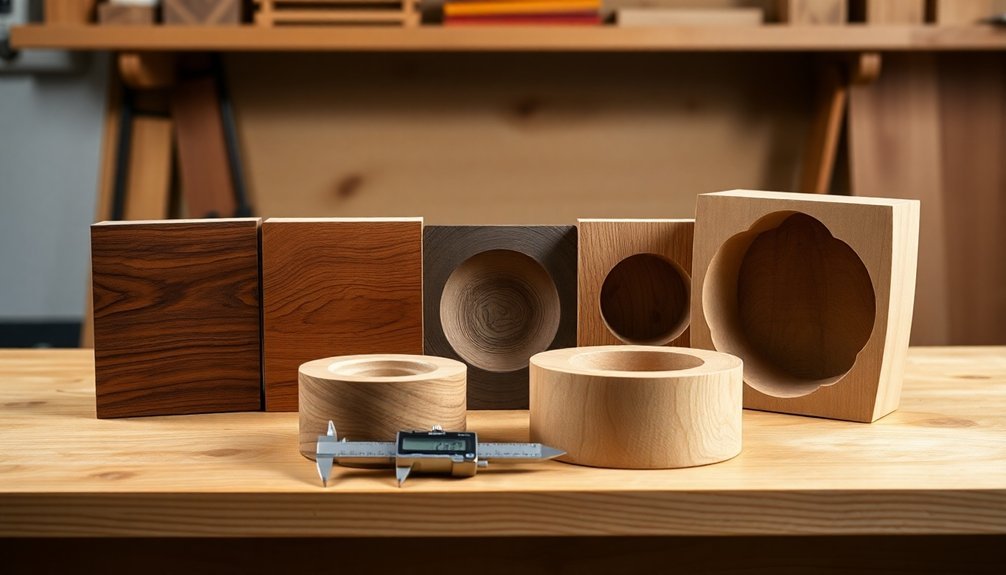
Superior material selection and precise construction form the backbone of top-performing wooden molds. When you're evaluating material quality, look for hardwoods like oak or maple that'll withstand repeated use and resist wear better than softer alternatives.
You'll want to guarantee your mold features reinforced corners and edges to prevent warping, along with precisely crafted joints and seams that stop resin from leaking.
Check that the surfaces are perfectly smooth to allow for easy release of your projects. The best molds come with protective sealants or finishes that guard against moisture and chemical damage.
Don't overlook the importance of dimensional accuracy in construction standards. A well-crafted mold should maintain its shape consistently, with every corner square and each surface level for reliable results time after time.
Size Options and Cutting Specifications
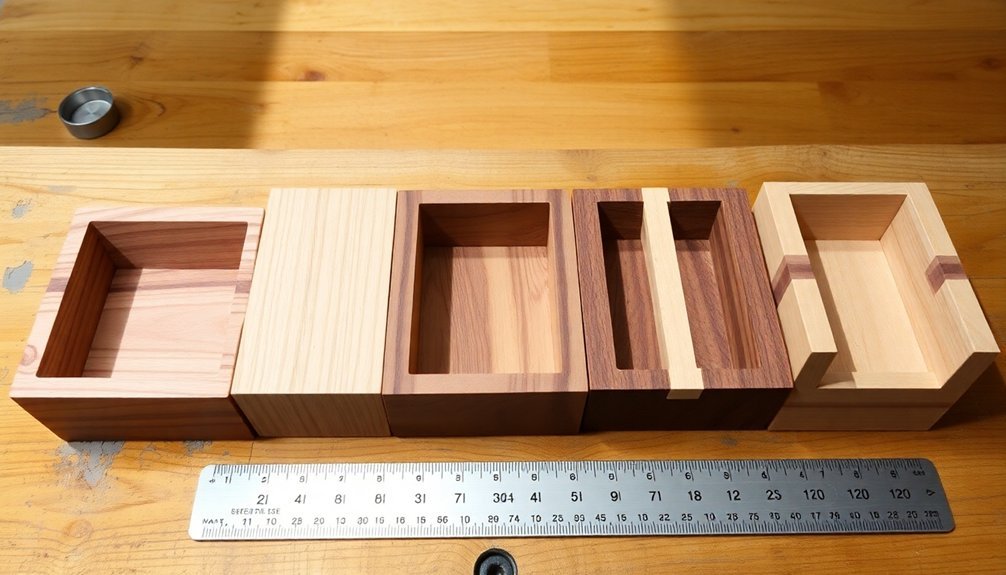
When choosing a handcrafted wooden mold, you'll need to evaluate both standard and custom size options to match your project requirements. Available dimensions typically range from 12×12 inches for smaller projects to 48×24 inches for larger applications.
| Size Category | Dimensions | Best Used For |
|---|---|---|
| Small | 12×12" | Coasters |
| Medium | 24×24" | Serving Trays |
| Large | 48×24" | Table Tops |
You'll want to verify the mold's thickness, which usually falls between 1/2 to 3/4 inch, ensuring proper stability for your project. Don't forget to check the internal dimensions carefully, as they'll determine your final product size and material quantities needed. Many artisans offer customizable size options if standard dimensions don't meet your needs, allowing you to create exactly what you envision.
Maintenance and Longevity Considerations
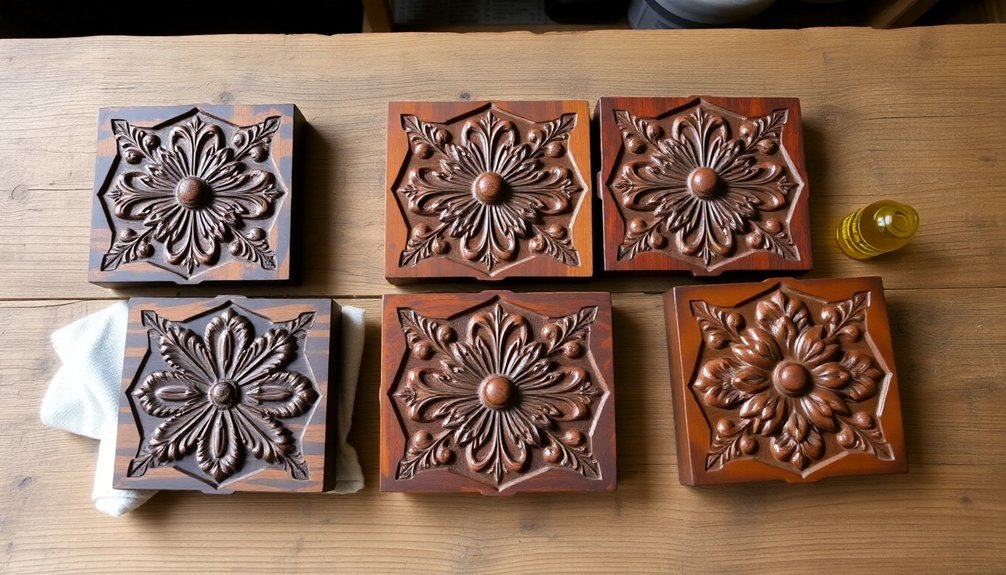
To guarantee your handcrafted wooden molds remain functional and durable, you'll need to establish a consistent maintenance routine. Regular inspections help you spot wear, warping, or cracking early, preventing project quality issues down the line.
Your maintenance practices directly impact the molds' longevity. After each use, clean them with mild soap and water, steering clear of harsh chemicals that can damage the wood.
Store your molds in a cool, dry space away from sunlight to prevent warping and maintain their shape. Don't forget to periodically treat the wood with food-safe mineral oil or wood conditioner to protect against moisture damage.
Keep track of how often you're using specific molds, as even premium wooden pieces will show signs of wear over time. Replace or repair them when performance begins to decline.
Design Elements for Professional Results
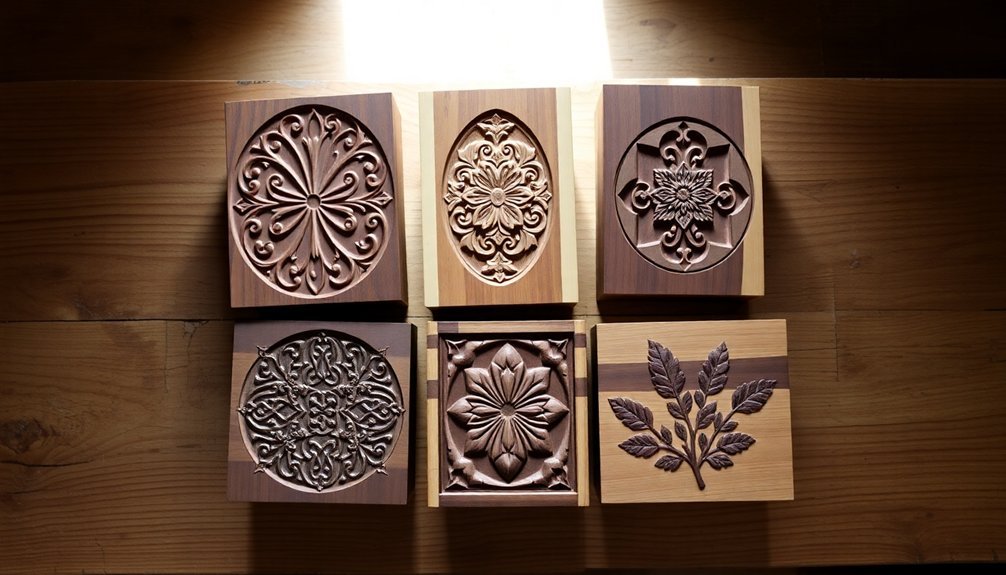
Professional woodworking results depend heavily on your mold's design elements and structural features. When selecting molds, you'll want to focus on those with precise 90-degree angles and flat bottoms, as these characteristics guarantee clean demolding and professional finishes.
High-quality silicone molds offer superior durability and versatility, letting you tackle diverse projects without complex assembly. Look for design elements like internal draft angles, which improve resin flow and minimize imperfections in your final piece.
Choose high-grade silicone molds with proper draft angles to ensure smooth resin flow and flawless project results.
Straight sides are vital, as they'll reduce the time you spend on post-processing and trimming.
Don't forget to invest in mold release sprays – they're essential for maintaining your mold's integrity and guaranteeing consistent quality.
With these features in place, you'll achieve professional results that meet the highest standards of craftsmanship.
Frequently Asked Questions
What Is the Best Wood for Making Molds?
You'll get the best results using hardwoods like maple, oak, or walnut for your molds. They're durable, resist warping, and have tight grain patterns. For a budget-friendly option, properly sealed plywood works well.
What Is the Best Wood for Moulding?
For molding, you'll find hardwoods like oak, maple, and poplar are your best choices. They're durable, hold detailed profiles well, and take finishes beautifully. Pine's a budget-friendly alternative if you're watching costs.
What Are the Different Types of Wood Moulding?
You'll find several wood molding types: crown molding for ceiling-wall joints, baseboards for floor-wall connections, door and window casings, chair rails for wall protection, and decorative trim like scotia and broken ogee designs.
What Is the Best Mold for Soap Making?
You'll find silicone molds are your best choice for soap making, as they're flexible, easy to use, and don't require release agents. They're perfect for creating intricate designs and removing finished soap effortlessly.
In Summary
You'll find that investing in a high-quality wooden soap mold pays off through consistent results and lasting durability. Consider your production needs when choosing size and design features, and don't forget to factor in maintenance requirements. Remember to inspect the wood quality, construction methods, and cutting specifications before making your purchase. With proper care, your handcrafted wooden mold will serve you reliably for years to come.

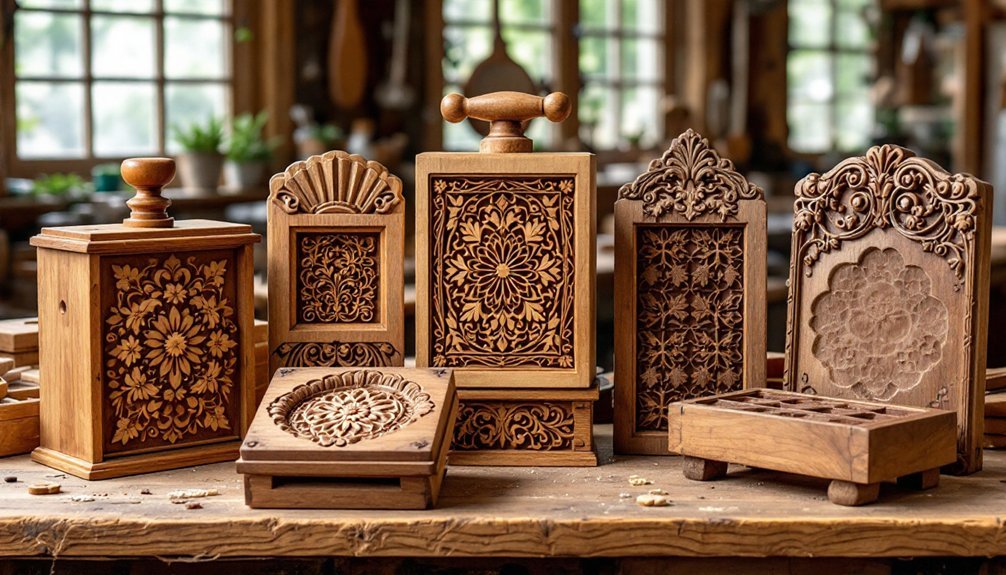



Leave a Reply